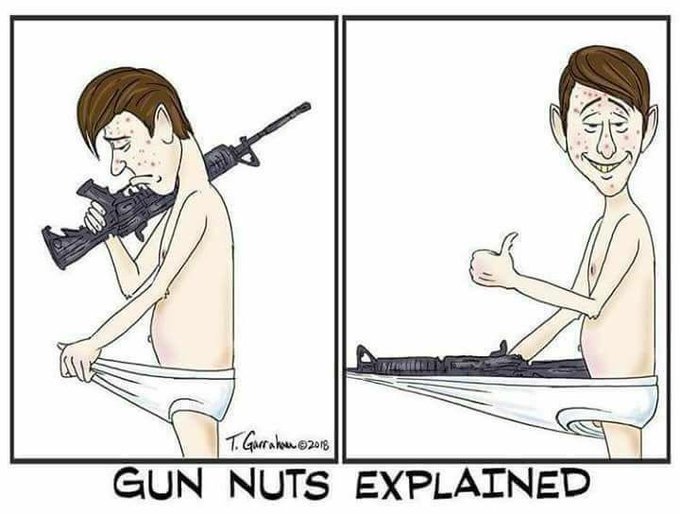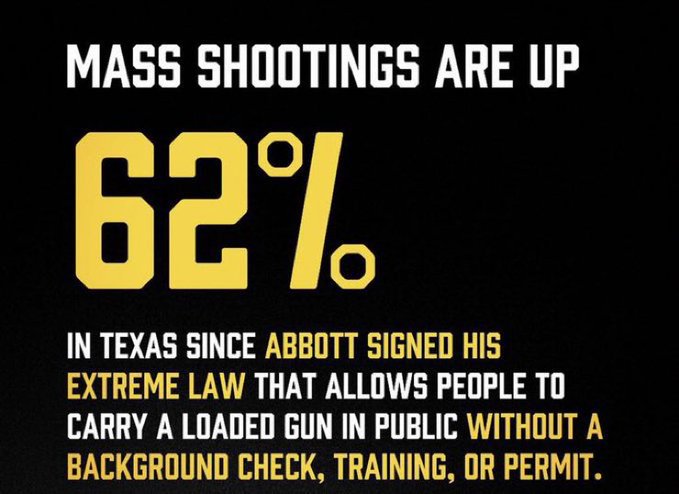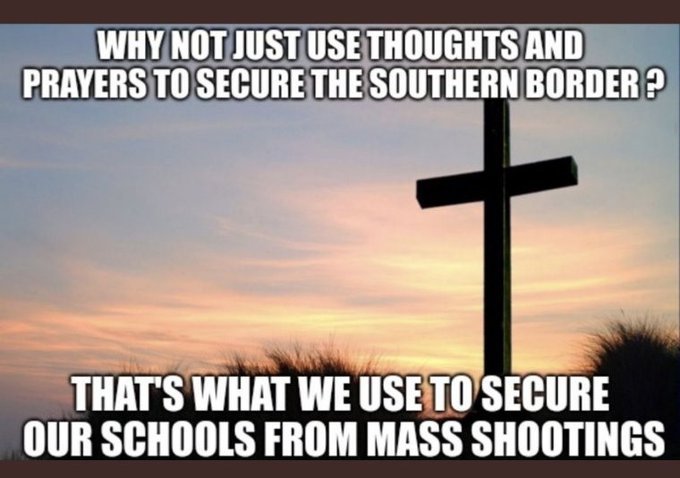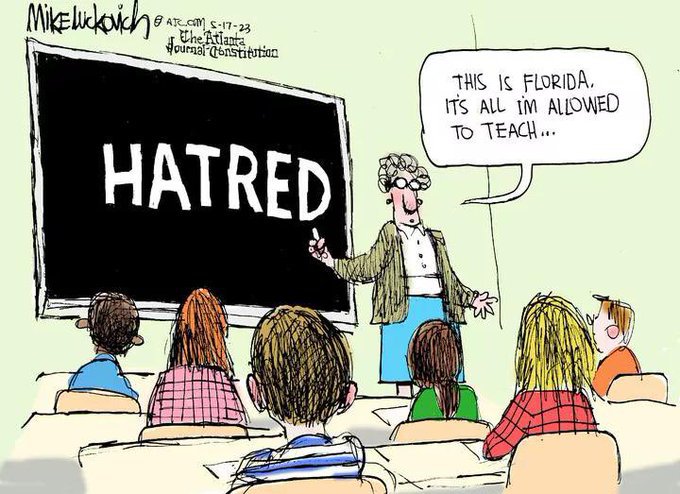You are using an out of date browser. It may not display this or other websites correctly.
You should upgrade or use an alternative browser.
You should upgrade or use an alternative browser.
Differences between UK and USA
- Thread starter GeoffCapes
- Start date
Tallman
Member
- Messages
- 2,415
There really is a problem with US society - it’s not only that there are too many guns (there are) - but even if you compare with countries where there are guns around (like SA) the number of massacres is just nuts. The fact that those in power don’t want to do something about it - I’ll never be able to understand those people.
MarkMas
Chief pedant
- Messages
- 10,464
There really is a problem with US society - it’s not only that there are too many guns (there are) - but even if you compare with countries where there are guns around (like SA) the number of massacres is just nuts. The fact that those in power don’t want to do something about it - I’ll never be able to understand those people.
It seems to be something to do with a combination of a 'cowboy mentality' and a 'grievance mentality'.
The 'cowboy' part says that every 'good man' is fiercely independent and constantly under threat, and is both expected and entitled to use violence to deal with 'bad men'. Part of this is linked to race, but is mostly (it seems to me) about the 'pioneering individual'. This combination of 'pioneer virtue' and fearfulness, creates 'be armed' and 'shoot first' mentalities that results in routine gun violence, as in the case of people being shot in minor confrontations. This seems very peculiar to the USA, and I suspect it is a consequence of its history as, supposedly, an untamed land colonised by arriviste adventurers.
Then you have a 'grievance mentality', where some people (notably depressed adolescents and angry old geezers) want to both be noticed and have 'revenge' on a society that they feel has ill-treated them. This is pretty common the world over, not just a US thing, and in most countries results in things like vandalism, football hooliganism and voting for demagogues.
If you combine the grievance element with the almost uniquely American cowboy element, and then add guns, you get both daily 'routine' shootings and pretty frequent mass shootings.
MarkMas
Chief pedant
- Messages
- 10,464
As for 'the right to bear arms', below is an essay on the subject by an excellent US blogger, setting out what a relatively recent idea it really is.

 heathercoxrichardson.substack.com
heathercoxrichardson.substack.com
HEATHER COX RICHARDSON, MAY 7, 2023
For years now, after one massacre or another, I have written some version of the same article, explaining that the nation’s current gun free-for-all is not traditional but, rather, is a symptom of the takeover of our nation by a radical extremist minority. The idea that massacres are “the price of freedom,” as right-wing personality Bill O’Reilly said in 2017 after the Mandalay Bay massacre in Las Vegas, in which a gunman killed 60 people and wounded 411 others, is new, and it is about politics, not our history.
The Second Amendment to the Constitution, on which modern-day arguments for widespread gun ownership rest, is one simple sentence: “A well regulated militia, being necessary for the security of a free state, the right of the people to keep and bear arms, shall not be infringed.” There’s not a lot to go on about what the Framers meant, although in their day, to “bear arms” meant to be part of an organized militia.
As the Tennessee Supreme Court wrote in 1840, “A man in the pursuit of deer, elk, and buffaloes might carry his rifle every day for forty years, and yet it would never be said of him that he had borne arms; much less could it be said that a private citizen bears arms because he has a dirk or pistol concealed under his clothes, or a spear in a cane.”
Today’s insistence that the Second Amendment gives individuals a broad right to own guns comes from two places.
One is the establishment of the National Rifle Association in New York in 1871, in part to improve the marksmanship skills of American citizens who might be called on to fight in another war, and in part to promote in America the British sport of elite shooting, complete with hefty cash prizes in newly organized tournaments. Just a decade after the Civil War, veterans jumped at the chance to hone their former skills. Rifle clubs sprang up across the nation.
By the 1920s, rifle shooting was a popular American sport. “Riflemen” competed in the Olympics, in colleges, and in local, state, and national tournaments organized by the NRA. Being a good marksman was a source of pride, mentioned in public biographies, like being a good golfer. In 1925, when the secretary of the NRA apparently took money from ammunition and arms manufacturers, the organization tossed him out and sued him.
NRA officers insisted on the right of citizens to own rifles and handguns but worked hard to distinguish between law-abiding citizens who should have access to guns for hunting and target shooting and protection, and criminals and mentally ill people, who should not. In 1931, amid fears of bootlegger gangs, the NRA backed federal legislation to limit concealed weapons; prevent possession by criminals, the mentally ill and children; to require all dealers to be licensed; and to require background checks before delivery. It backed the 1934 National Firearms Act, and parts of the 1968 Gun Control Act, designed to stop what seemed to be America’s hurtle toward violence in that turbulent decade.
But in the mid-1970s a faction in the NRA forced the organization away from sports and toward opposing “gun control.” It formed a political action committee (PAC) in 1975, and two years later it elected an organization president who abandoned sporting culture and focused instead on “gun rights.”
This was the second thing that led us to where we are today: leaders of the NRA embraced the politics of Movement Conservatism, the political movement that rose to combat the business regulations and social welfare programs that both Democrats and Republicans embraced after World War II.
Movement Conservatives embraced the myth of the American cowboy as a white man standing against the “socialism” of the federal government as it sought to level the economic playing field between Black Americans and their white neighbors.
Leaders like Arizona Senator Barry Goldwater personified the American cowboy, with his cowboy hat and opposition to government regulation, while television Westerns showed good guys putting down bad guys without the interference of the government.
In 1972 the Republican platform had called for gun control to restrict the sale of “cheap handguns,” but in 1975, as he geared up to challenge President Gerald R. Ford for the 1976 presidential nomination, Movement Conservative hero Ronald Reagan took a stand against gun control. In 1980, the Republican platform opposed the federal registration of firearms, and the NRA endorsed a presidential candidate—Reagan—for the first time.
When President Reagan took office, a new American era, dominated by Movement Conservatives, began. And the power of the NRA over American politics grew.
In 1981 a gunman trying to kill Reagan shot and paralyzed his press secretary, James Brady, and wounded Secret Service agent Tim McCarthy and police officer Thomas Delahanty. After the shooting, then-representative Charles Schumer (D-NY) introduced legislation that became known as the Brady Handgun Violence Prevention Act, or the Brady Bill, to require background checks before gun purchases. Reagan, who was a member of the NRA, endorsed the bill, but the NRA spent millions of dollars to defeat it.
After the Brady Bill passed in 1993, the NRA paid for lawsuits in nine states to strike it down. Until 1959, every single legal article on the Second Amendment concluded that it was not intended to guarantee individuals the right to own a gun. But in the 1970s, legal scholars funded by the NRA had begun to argue that the Second Amendment did exactly that.
In 1997, when the Brady Bill cases came before the Supreme Court as Printz v. United States, the Supreme Court declared parts of the measure unconstitutional.
Now a player in national politics, the NRA was awash in money from gun and ammunition manufacturers. By 2000 it was one of the three most powerful lobbies in Washington. It spent more than $40 million on the 2008 election. In that year, the landmark Supreme Court decision of District of Columbia v. Heller struck down gun regulations and declared that the Second Amendment protects an individual’s right to keep and bear arms.
Increasingly, NRA money backed Republican candidates. In 2012 the NRA spent $9 million in the presidential election, and in 2014 it spent $13 million. Then, in 2016, it spent over $50 million on Republican candidates, including more than $30 million on Trump’s effort to win the White House. This money was vital to Trump, since many other Republican super PACs refused to back him. The NRA spent more money on Trump than any other outside group, including the leading Trump super PAC, which spent $20.3 million.
The unfettered right to own and carry weapons has come to symbolize the Republican Party’s ideology of individual liberty. Lawmakers and activists have not been able to overcome Republican insistence on gun rights despite the mass shootings that have risen since their new emphasis on guns.
Tonight, I am, once again, posting yet another version of this article.
© 2023 Heather Cox Richardson

Letters from an American | Heather Cox Richardson | Substack
A newsletter about the history behind today's politics. Click to read Letters from an American, by Heather Cox Richardson, a Substack publication with millions of readers.
HEATHER COX RICHARDSON, MAY 7, 2023
For years now, after one massacre or another, I have written some version of the same article, explaining that the nation’s current gun free-for-all is not traditional but, rather, is a symptom of the takeover of our nation by a radical extremist minority. The idea that massacres are “the price of freedom,” as right-wing personality Bill O’Reilly said in 2017 after the Mandalay Bay massacre in Las Vegas, in which a gunman killed 60 people and wounded 411 others, is new, and it is about politics, not our history.
The Second Amendment to the Constitution, on which modern-day arguments for widespread gun ownership rest, is one simple sentence: “A well regulated militia, being necessary for the security of a free state, the right of the people to keep and bear arms, shall not be infringed.” There’s not a lot to go on about what the Framers meant, although in their day, to “bear arms” meant to be part of an organized militia.
As the Tennessee Supreme Court wrote in 1840, “A man in the pursuit of deer, elk, and buffaloes might carry his rifle every day for forty years, and yet it would never be said of him that he had borne arms; much less could it be said that a private citizen bears arms because he has a dirk or pistol concealed under his clothes, or a spear in a cane.”
Today’s insistence that the Second Amendment gives individuals a broad right to own guns comes from two places.
One is the establishment of the National Rifle Association in New York in 1871, in part to improve the marksmanship skills of American citizens who might be called on to fight in another war, and in part to promote in America the British sport of elite shooting, complete with hefty cash prizes in newly organized tournaments. Just a decade after the Civil War, veterans jumped at the chance to hone their former skills. Rifle clubs sprang up across the nation.
By the 1920s, rifle shooting was a popular American sport. “Riflemen” competed in the Olympics, in colleges, and in local, state, and national tournaments organized by the NRA. Being a good marksman was a source of pride, mentioned in public biographies, like being a good golfer. In 1925, when the secretary of the NRA apparently took money from ammunition and arms manufacturers, the organization tossed him out and sued him.
NRA officers insisted on the right of citizens to own rifles and handguns but worked hard to distinguish between law-abiding citizens who should have access to guns for hunting and target shooting and protection, and criminals and mentally ill people, who should not. In 1931, amid fears of bootlegger gangs, the NRA backed federal legislation to limit concealed weapons; prevent possession by criminals, the mentally ill and children; to require all dealers to be licensed; and to require background checks before delivery. It backed the 1934 National Firearms Act, and parts of the 1968 Gun Control Act, designed to stop what seemed to be America’s hurtle toward violence in that turbulent decade.
But in the mid-1970s a faction in the NRA forced the organization away from sports and toward opposing “gun control.” It formed a political action committee (PAC) in 1975, and two years later it elected an organization president who abandoned sporting culture and focused instead on “gun rights.”
This was the second thing that led us to where we are today: leaders of the NRA embraced the politics of Movement Conservatism, the political movement that rose to combat the business regulations and social welfare programs that both Democrats and Republicans embraced after World War II.
Movement Conservatives embraced the myth of the American cowboy as a white man standing against the “socialism” of the federal government as it sought to level the economic playing field between Black Americans and their white neighbors.
Leaders like Arizona Senator Barry Goldwater personified the American cowboy, with his cowboy hat and opposition to government regulation, while television Westerns showed good guys putting down bad guys without the interference of the government.
In 1972 the Republican platform had called for gun control to restrict the sale of “cheap handguns,” but in 1975, as he geared up to challenge President Gerald R. Ford for the 1976 presidential nomination, Movement Conservative hero Ronald Reagan took a stand against gun control. In 1980, the Republican platform opposed the federal registration of firearms, and the NRA endorsed a presidential candidate—Reagan—for the first time.
When President Reagan took office, a new American era, dominated by Movement Conservatives, began. And the power of the NRA over American politics grew.
In 1981 a gunman trying to kill Reagan shot and paralyzed his press secretary, James Brady, and wounded Secret Service agent Tim McCarthy and police officer Thomas Delahanty. After the shooting, then-representative Charles Schumer (D-NY) introduced legislation that became known as the Brady Handgun Violence Prevention Act, or the Brady Bill, to require background checks before gun purchases. Reagan, who was a member of the NRA, endorsed the bill, but the NRA spent millions of dollars to defeat it.
After the Brady Bill passed in 1993, the NRA paid for lawsuits in nine states to strike it down. Until 1959, every single legal article on the Second Amendment concluded that it was not intended to guarantee individuals the right to own a gun. But in the 1970s, legal scholars funded by the NRA had begun to argue that the Second Amendment did exactly that.
In 1997, when the Brady Bill cases came before the Supreme Court as Printz v. United States, the Supreme Court declared parts of the measure unconstitutional.
Now a player in national politics, the NRA was awash in money from gun and ammunition manufacturers. By 2000 it was one of the three most powerful lobbies in Washington. It spent more than $40 million on the 2008 election. In that year, the landmark Supreme Court decision of District of Columbia v. Heller struck down gun regulations and declared that the Second Amendment protects an individual’s right to keep and bear arms.
Increasingly, NRA money backed Republican candidates. In 2012 the NRA spent $9 million in the presidential election, and in 2014 it spent $13 million. Then, in 2016, it spent over $50 million on Republican candidates, including more than $30 million on Trump’s effort to win the White House. This money was vital to Trump, since many other Republican super PACs refused to back him. The NRA spent more money on Trump than any other outside group, including the leading Trump super PAC, which spent $20.3 million.
The unfettered right to own and carry weapons has come to symbolize the Republican Party’s ideology of individual liberty. Lawmakers and activists have not been able to overcome Republican insistence on gun rights despite the mass shootings that have risen since their new emphasis on guns.
Tonight, I am, once again, posting yet another version of this article.
© 2023 Heather Cox Richardson
- Messages
- 35,854
It’s the same just a different shapeYou said it was Andouille sausage. The French can keep it. I'd eat haggis any day over that abomination.
doodlebug
Member
- Messages
- 945
Andouille is made from the colon and intestines of a pig. Judging by the smell of it, the bits of colon that are used are those closest to the exit.It’s the same just a different shape
Haggis uses sheep offal so most definitely does not smell like the rear end of a sheep. I should know, I'm a Kiwi and I know all about sheep.
CatmanV2
Member
- Messages
- 52,721
While that sounds 'impressive' one would really need to know over what period of time, and how many etc etc
C
MarkMas
Chief pedant
- Messages
- 10,464
Plus date of the new law, which was September 2021While that sounds 'impressive' one would really need to know over what period of time, and how many etc etc
C
:watermark(cdn.texastribune.org/media/watermarks/2021.png,-0,30,0)/static.texastribune.org/media/files/aa0fa8674afff002d3687b63a32478bf/Handgun%20File%20EL%20TT%2001.jpg)
Texans can carry handguns without a license or training starting Sept. 1, after Gov. Greg Abbott signs permitless carry bill into law
Abbott, Lt. Gov. Dan Patrick and other Republicans who were initially noncommittal about the bill were under immense political pressure this session from conservatives and gun rights advocates, who have long lobbied the Texas Legislature for permitless carry.
Plus definition of mass shooting. Most statistics simply define this a 3 (or 4) killed. But this includes individuals killing their families, but excludes incompetents who go into a mall with 5 guns but only manage to kill a couple of people. I found one source that said Texas had a total of 12 mass shootings from 1982 to April 2023 (40 years) and another that listed 143 mass shooting incidents between 2013 and 2019 (7 years)!

Mass shootings in the U.S. by state 1982-2023 | Statista
As of April 2023, California had the most mass shootings in the United States, with 25 total shootings since 1982.
Wikipedia has comprehensive listings, but I'm not going to do an analysis (today).
List of mass shootings in the United States in 2023 - Wikipedia
CatmanV2
Member
- Messages
- 52,721
So at to avoid thread drift, I really love haggis but I hate mass shootings.
On this, I will happily concurr
C
- Messages
- 35,854
Sheep, pig, rat, it’s all offal, it all stinks and the makers can keep it!Andouille is made from the colon and intestines of a pig. Judging by the smell of it, the bits of colon that are used are those closest to the exit.
Haggis uses sheep offal so most definitely does not smell like the rear end of a sheep. I should know, I'm a Kiwi and I know all about sheep.
- Messages
- 22,245
It's just great that we have the French to hoover up all the leftovers.Sheep, pig, rat, it’s all offal, it all stinks and the makers can keep it!
zagatoes30
Member
- Messages
- 23,440
I'm with Matt it's offal regardless off the shape or skin you wrap it in
midlifecrisis
Mancunian
- Messages
- 17,548
That same 'tripe' is probably still on sale today...The "Tripe" (French) I had in St Malo, Bretagne 46 years ago put me off for life - I've tried Haggis but wasn't convinced either - at least it didn't smell bad
midlifecrisis
Mancunian
- Messages
- 17,548
Not a difference between the UK and USA, but Serbia (who I thought was the last country in Europe to do this!), but sense seems to have prevailed.
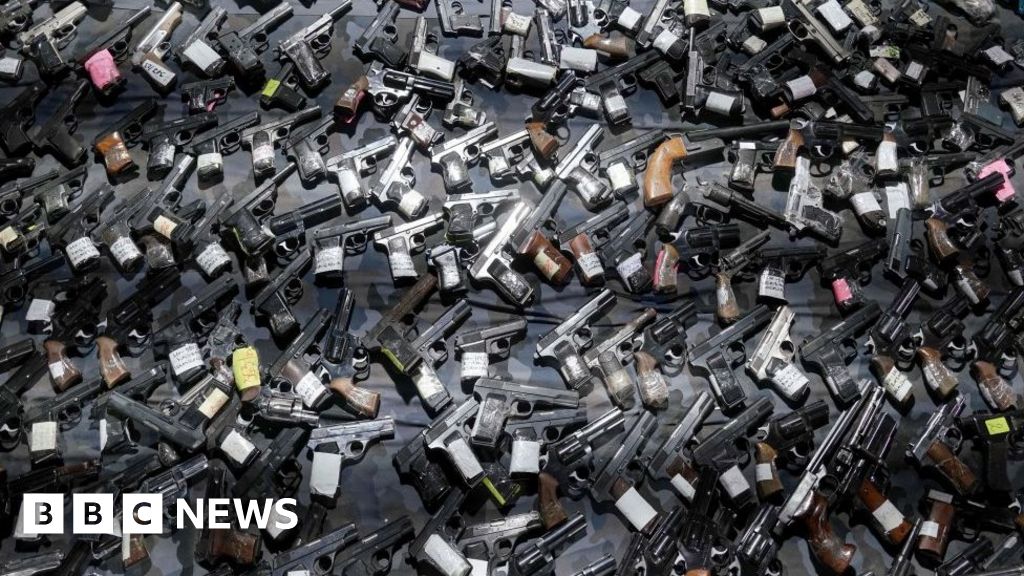

Serbians hand in guns and question culture of violence after two shootings
Back-to-back attacks prompt a gun amnesty and fears among some that the country is becoming more like the US.
www.bbc.co.uk


